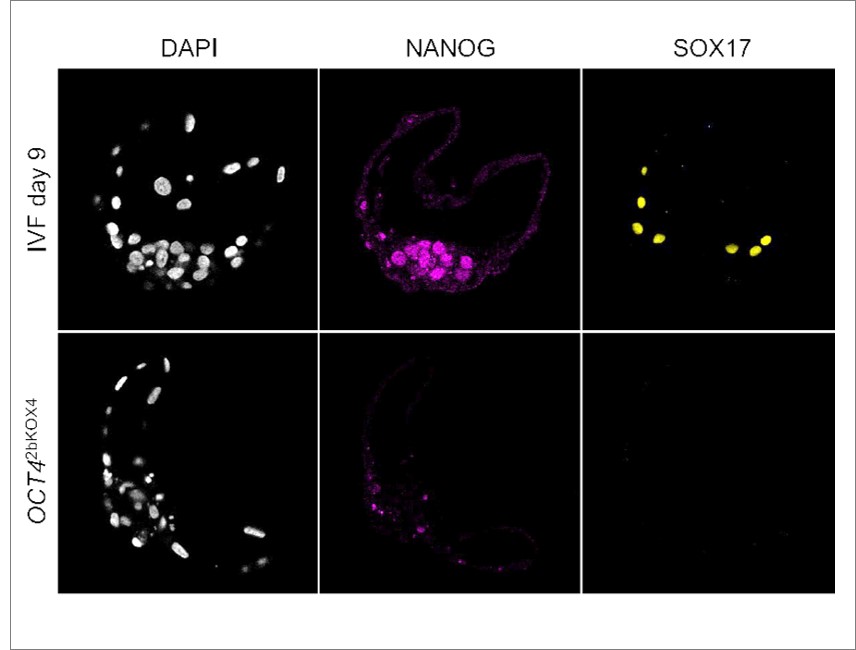Role of OCT4/POU5F1 for lineage differentiation in bovine embryos uncovered
01.06.2022
The mammalian blastocyst undergoes two lineage segregations, that is, formation of the trophectoderm and subsequently differentiation of the hypoblast (HB) from the inner cell mass, leaving the epiblast (EPI) as the remaining pluripotent lineage. To clarify the expression patterns of markers specific for these lineages in bovine embryos, we analyzed day 7, 9, and 12 blastocysts completely produced in vivo by staining for OCT4, NANOG, SOX2 (EPI), and GATA6, SOX17 (HB) and identified genes specific for these developmental stages in a global transcriptomics approach. To study the role of OCT4, we generated OCT4-deficient (OCT4 KO) embryos via somatic cell nuclear transfer or in vitro fertilization. OCT4 KO embryos reached the expanded blastocyst stage by day 8 but lost NANOG and SOX17 expression, while SOX2 and GATA6 were unaffected. Blastocysts transferred to recipient cows from day 6 to 9 expanded, but the OCT4 KO phenotype was not rescued by the uterine environment. Exposure of OCT4 KO embryos to exogenous FGF4 or chimeric complementation with OCT4 intact embryos did not restore NANOG or SOX17 in OCT4-deficient cells. Our data show that OCT4 is required cell autonomously for the maintenance of pluripotency of the EPI and differentiation of the HB in bovine embryos.


